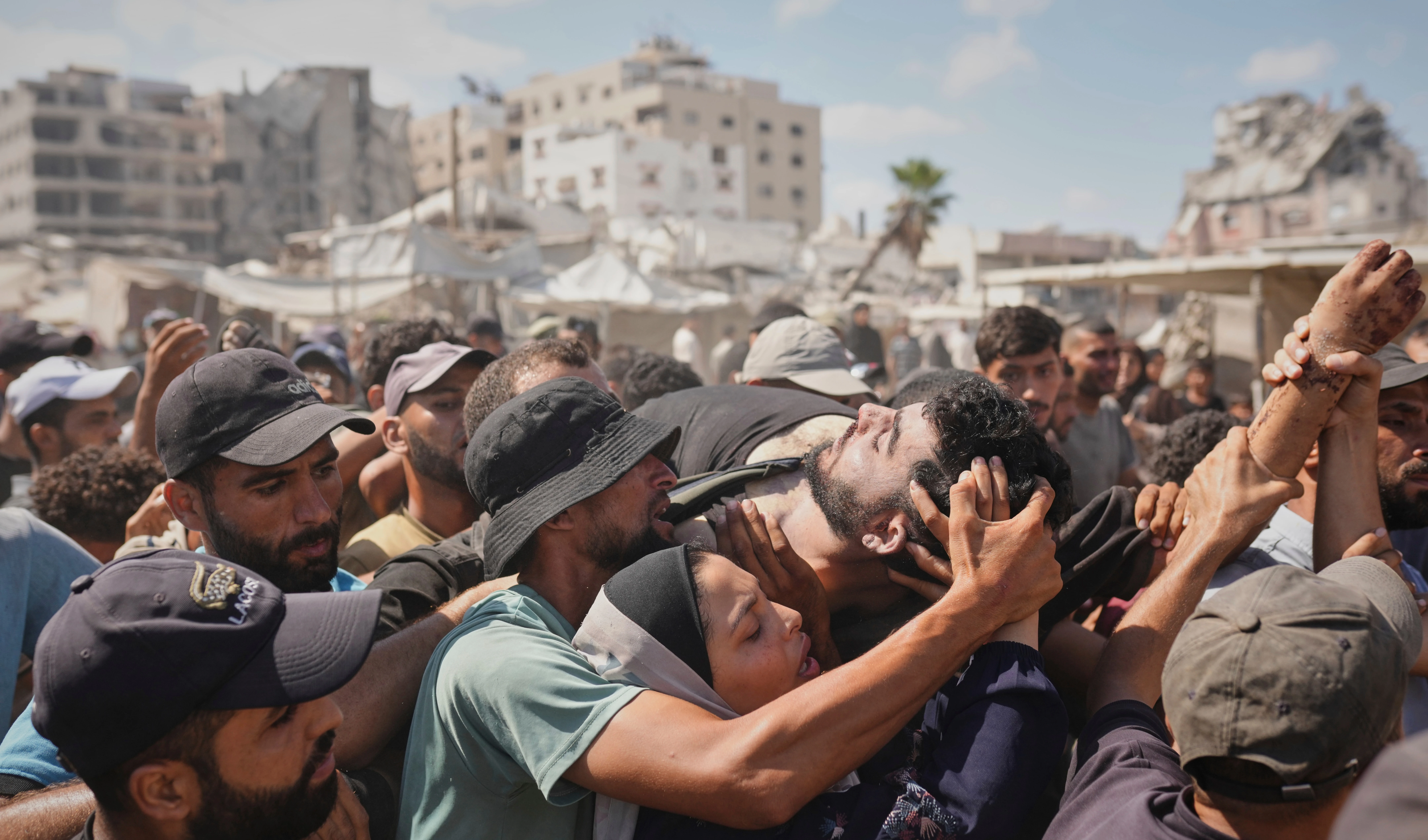Agony without relief: Gaza patients suffer as hospitals run dry
Doctors in Gaza face impossible choices, rationing morphine and using unsafe alternatives as "Israel’s" blockade chokes off vital medical supplies.
-

Palestinians who were shot by Israeli occupation forces during a food distribution at a center run by the Gaza Humanitarian Foundation receive treatment on the floor of Nasser Hospital in Khan Younis, southern Gaza Strip on Saturday, July 19, 2025. (AP)
A report by The Guardian paints a grim picture of Gaza’s health crisis. At Nasser Hospital, a boy named Mahmoud lies with a gunshot wound to his leg. His shattered knee has become infected, and while doctors can briefly ease his suffering with a nerve block, the pain soon returns. With painkillers almost gone, there is little more they can do.
Since October 7, 2023, Gaza’s Health Ministry estimates that more than 167,000 Palestinians have been injured due to the relentless Israeli bombings. Hospitals remain overwhelmed with patients suffering burns, amputations, blast wounds, and broken bones. Yet with supplies of anaesthetics and painkillers running dangerously low, doctors are often forced to ration even the most basic medication.
The Bureau of Investigative Journalism (TBIJ) found that over half of the World Health Organization’s medical missions into Gaza this year, including deliveries of medicines and fuel, staff deployments, and patient evacuations, were either denied, delayed, impeded, or cancelled.
Meanwhile, Israeli strikes have damaged hospitals and storage sites, while international aid convoys carrying medical supplies face lengthy delays or are turned away at the border.
According to The Guardian, Eight doctors interviewed by TBIJ described severe shortages of opioids, anaesthetics, and even paracetamol.
“Most injuries are amputations or open fractures,” said orthopaedic surgeon Abdelkareem Alsalqawi. “These are severely painful and require 24-hour painkillers. [But now] we tell them: one injection per day … use it at night so you can sleep.”
Aid bottlenecks and collapsing supply chains
In July, Israeli Prime Minister Benjamin Netanyahu announced that “Israel” would permit only “minimal humanitarian supplies” into Gaza, but aid agencies say the flow has slowed to a trickle, creating what they describe as a near-total collapse of the medical supply chain.
“It is very clear that since March, we have spent months without allowing anything to enter,” said Dr Randa Abu Rabe of the WHO’s office for the occupied Palestinian territory. “It is not only the medication: it is the reagent, the diagnostics, some of the instruments or equipment.”
"Israel’s" Coordinator of Government Activities in the Territories (COGAT) has claimed otherwise, stating: “Israel allows and facilitates the entry of medical equipment and medicines, subject to prior coordination. As evidence, in recent weeks alone, more than 3,500 tons of medical equipment have been transferred.”
Doctors and aid groups dispute this claim, pointing to long delays, ignored requests, and shortages on the ground.
Rationing opioids and risky alternatives
Doctors say opioids, classified by the WHO as essential medicines, are now being rationed to the point that some patients receive only one injection a day, leaving them in agony for hours. In operating theatres, single vials of morphine meant for one patient are divided among several, raising the risk of infection.
With morphine scarce, many hospitals rely on ketamine, which doctors describe as a “battlefield medication” because of its hallucinogenic side effects.
“If someone came in with an amputation, they would get an IV and then a dose of ketamine. It lasts about 45 minutes,” Melin explained. “But giving it as a single dose, with the workforce here, is not feasible … They can’t stand up, they can’t walk around, they can’t interact. So that’s not a safe option either.”
During mass casualty incidents, doctors pre-fill syringes with ketamine to inject small amounts into patients, but the relief is short-lived and often leaves them terrified or hallucinating.
“Patients come into the ER and may or may not get a dose of ketamine. If they’re in pain but it’s not a catastrophic injury, they often won’t get anything,” Melin said.
“For a severe injury or a procedure like inserting a chest tube, they’ll probably be given ketamine. But for something like a simple gunshot wound, most people are just toughing it out.”

 4 Min Read
4 Min Read










